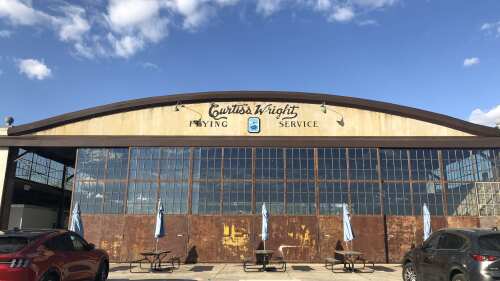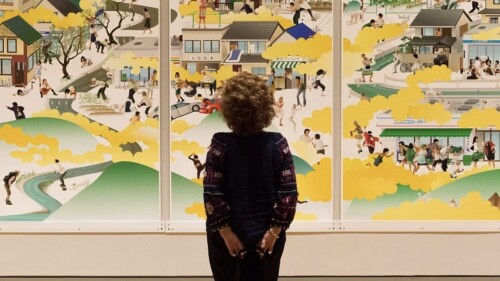By: Historic Columbia, a non-profit organization dedicated to preserving Columbia and Richland County’s historic and cultural heritage.
This is a contributor-submitted Voices piece. Want to join the conversation? We invite you to write for us. Learn how to share your voice here.
We’ve talked about the Green Book before in this series, but here’s a refresher:
As automobile travel grew increasingly popular from the 1930s through the 1960s, African Americans found themselves faced with what historian Gretchen Sorin called “an uncertain landscape,” much of which was “composed of white spaces where black people were forbidden and unwelcome.” In preparation for travel, families often packed enough food and gas to last the entire trip because they might not find businesses that would serve them. The prevalence of “sundown towns,” where it was dangerous to African Americans to stay or even briefly stop at night, meant that some families drove for days at a time or slept in their car.
The Negro Motorist Green Book, established in 1936, became a powerful guide for black travelers during its 30 years in print. Listed within its pages were restaurants, shops, hotels, and attractions that were run by members of the black business community and catered to local and visiting African American patrons. Here’s what’s new:
Stories from the Road
In January, the Smithsonian Channel hosted the world premiere of the documentary, The Green Book: Guide to Freedom at the South Carolina State Museum. (Catch the television premiere on the Smithsonian Channel next Monday, February 25 at 8:00 p.m.).
The film highlights several Green Book sites across the country—including two listings in Columbia.
But more than laying out a roadmap of history, director Yoruba Richen asks the question: How are we preserving these sites for future generations?
Close to home
The Green Book: Guide to Freedom features two sites in Columbia: the Mrs. Harriet M. Cornwell Tourist Home and Motel Simbeth.
The Mrs. Harriet M. Cornwell Tourist Home at 1713 Wayne Street is one of a few remaining structures listed in the Green Book in Columbia. From around 1938 until 1967 (the entire time that South Carolina was listed in the Green Book), Harriet Cornwell, a teacher at Waverly School, welcomed African American travelers who were not permitted at white-owned motels and hotels.
Harriet “Hattie Mae” Cornwell was a leader in the Arsenal Hill community and also regularly opened her home to neighbors in need. In 1914, while Francis Butler was rebuilding his family’s home at 1716 Wayne Street, several family members stayed at the Cornwell house. It was also common for Green Book-listed tourist homes in Columbia to provide long-term accommodations for Allen University and Benedict College students.
Modjeska Monteith Simkins, matriarch of South Carolina’s civil rights movement, owned and operated Motel Simbeth. Located on Two Notch Road eight miles outside of the city, the motel she co-owned with Frank Bethel provided shelter for black travelers.
Opened in 1955, Motel Simbeth quickly became a landmark business for the ongoing civil rights movement in South Carolina, which meant it was also subject to vandalism and violence, including several instances of gunfire in the spring of 1956. (If you’d like to read more about the motel keep an eye on the HC blog.)
The Green Book: Guide to Freedom also features an interview with Simkins’ niece, Dr. Henrie Monteith Treadwell, one of three students who desegregated the University of South Carolina on September 11, 1963. According to Dr. Treadwell, “the Simbeth Motel was a home away from home for many black musicians touring the South as there were few hotels that would accept them.”
While Motel Simbeth no longer stands, Simkins’ home at 2025 Marion Street remains intact. From 1934 until her death in 1992, it served as a key location for civil rights and social justice activities. In 2017, Historic Columbia received an African American Civil Rights Grant from the Historic Preservation Fund administered by the National Park Service, Department of the Interior, to rehabilitate the Modjeska Monteith Simkins Site, ensuring that we can continue the legacy of our state’s fiercest civil rights activist.
Searching for more?
If you’d like to learn more about Modjeska Simkins, check out last year’s #TBT. For future articles about her life and work, keep an eye out on Historic Columbia’s website. Updates about the rehabilitation are posted regularly on our Instagram.
And if you’re looking for a podcast to listen to on your morning drive, we highly recommend 99% Invisible’s The Green Book Redux. The Green Book: Guide to Freedom premiers on the Smithsonian Channel on February 25th at 8:00pm.
If you’d like to learn more about Modjeska Simkins, check out last year’s #TBT. And, if you’re looking for a podcast to listen to on your morning drive, we highly recommend 99% Invisible’s The Green Book Redux. The Green Book: Guide to Freedom premiers on the Smithsonian Channel on February 25th at 8:00pm. 🎬
– Historic Columbia














